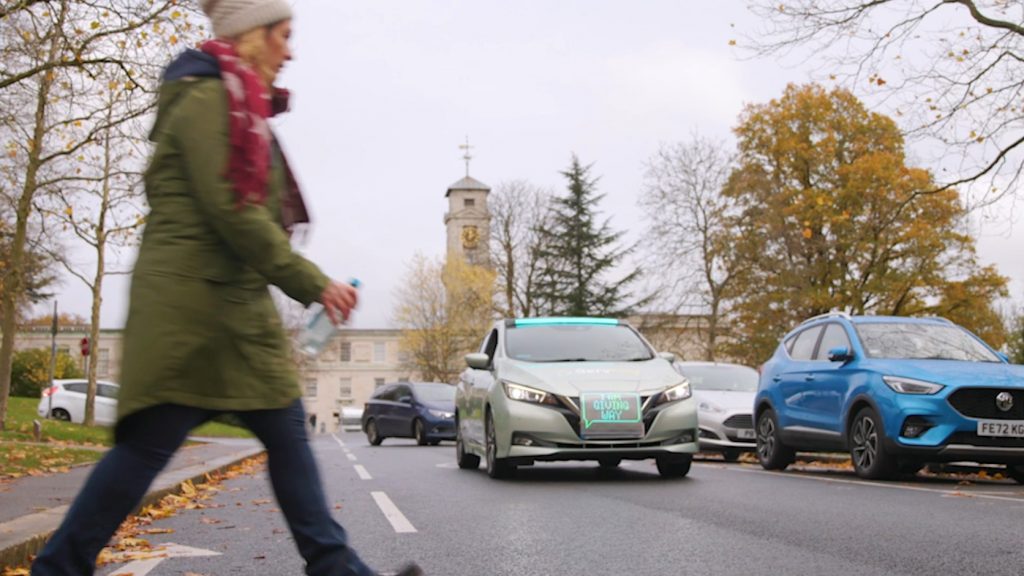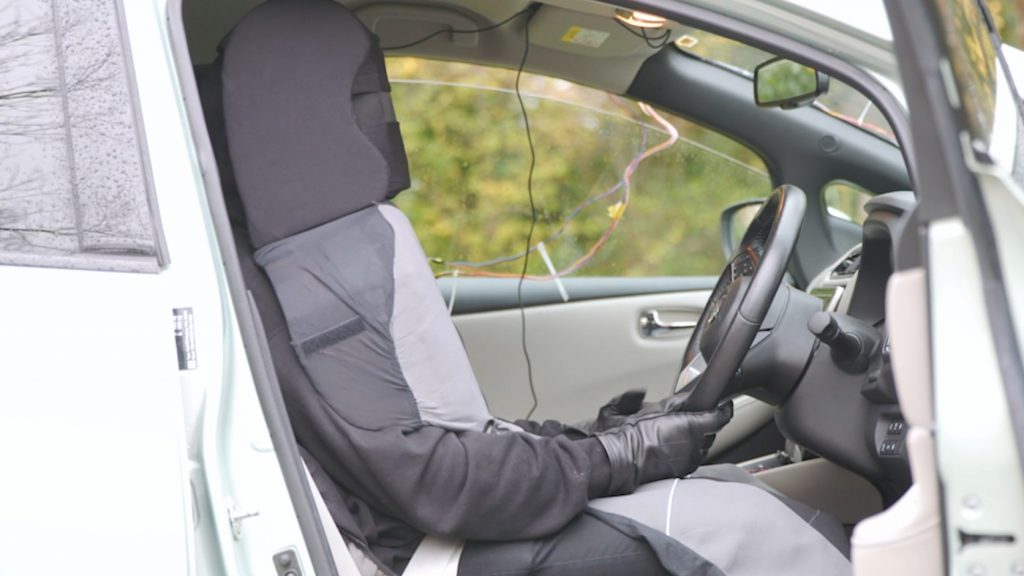
By using a “ghost driver” — a researcher behind the steering wheel disguised as a car seat — scientists now find that in the apparent absence of a person in the driving seat, pedestrians trust some visual signals more than others when deciding whether to cross in front of an autonomous car, according to a recent study.
In the recent study, researchers wanted to understand how pedestrians respond naturally to self-driving vehicles with different visual displays positioned on the front of the vehicle known as external human-machine interfaces. To do this, a Nissan Leaf with a concealed ghost driver motored across the campus of the University of Nottingham in England for several days.

A series of different designs displayed on an LED strip informed pedestrians of the car’s behavior and intention. These designs ranged from an image mimicking an eye’s pupil to expressive eyes and a face accompanied by short text-based language such as “I have seen you” or “I am giving way.”
“As part of the ServCity project, which created a blueprint infrastructure for autonomous vehicles in the U.K., we wanted to explore how pedestrians would interact with a driverless car, and developed this unique methodology to explore their reactions,” David Large, senior research fellow with the Human Factors Research Group at the University of Nottingham, said in a statement. “We were keen to identify which designs invited the highest levels of trust by people wanting to cross the road.”
The external human-machine interface was controlled by a team member sat in the back seat, while front and rear dash cam footage was collected to observe pedestrians’ reactions in real time. Additionally, scientists were placed at four crossing points to ask pedestrians to complete a short survey about their experience of the vehicle and its displays.
During the course of the study, 520 pedestrians interacted with the car and 64 survey responses were collected. More than 80 percent of respondents believed that the car was driving on its own.
The scientists focused on several key details captured by 10 hours of dash cam footage to analyze pedestrian crossing behavior, such as how long it took people to cross, how long they looked at the car, and the number of times they glanced or gestured at the vehicle. This, combined with the survey results, gave researchers insights into people’s attitudes and behavior in response to the different displays, and to autonomous vehicles more generally.
The scientists found a substantial number of respondents did find the external interface an important factor when deciding whether or not to cross the road. The external human-machine interface with the expressive eyes not only captured the most visual attention, but it also received good ratings for trust and clarity as well as the highest preference, whereas the simple LED strip was rated as less clear and invited lower ratings of trust, Gary Burnett, head of the human factors research group and professor of transport human factors at the University of Nottingham, said in a statement.
“An interesting additional discovery was that pedestrians continued to use hand gestures — for example, thanking the car — despite most survey respondents believing the car was genuinely driverless, showing that there is still an expectation of some kind of social element in these types of interaction,” Large said in a statement.
Moving forward, the team plan to examine a broader range of vulnerable road users, such as cyclists and e-scooter users, and how they might naturally interact with a future autonomous vehicle. They note that future research should also take place over extended periods to understand how the public’s response to a driverless car might change over time.
The scientists detailed their findings at the Ergonomics & Human Factors conference in Warwick, England, earlier this year.

